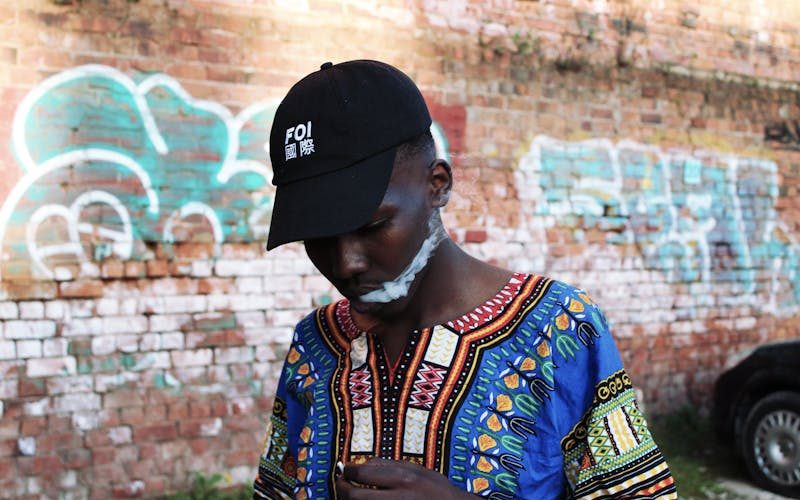Drug abuse a global issue as six-year-olds fall prey to vice

In 2022, one person in every 11 people with drug use disorders received drug treatment globally.
In Kenya, the majority of these patients were bhang users, a United Nations report on drugs has shown.
The report estimates that one in 18 people used a drug in 2022 translating to a global population of 292 million drug users aged between 15 and 64, out of which 64 million of them were suffering from a drug use disorder as of 2022.
Bhang whether ingested or smoked remains the most used drug worldwide, with an estimated 228 million users in the past year, followed by opioids, with 60 million, amphetamine-type stimulants, with 30 million, and cocaine and “ecstasy”, with 23 million and 20 million, respectively.
Opioids are primarily used to treat moderate to severe pain, but when used without prescription they can lead to addiction and dependence. Heroin is a form of opioid drug.
Amphetamine-type stimulants (ATS) are a group of synthetic drugs that are known for their ability to increase alertness and energy levels. Many countries have banned the use of ATS drugs without prescription due to their harmful effect on users including addiction, heart problems, stroke and damage to the brain and nervous system.
Ecstasy is a synthetic drug that alters the mood and perception of the user and increases energy and alertness (stimulant). Its abuse can result to problems with learning and memory, depression and heart problems especially among people with blood pressure issues.
“The range of drugs available to consumers has expanded, making patterns of use increasingly complex and polydrug use a common feature in most drug markets. The largest global burden of disease continues to be attributed to opioids, use of which appears to have remained stable at the global level since 2019, in contrast to other drugs, although opioid-related deaths continue to increase in some regions,” World Drug Report released by United Nations Office on Drugs and Crime (UNODC) says.
UNODC’s report comes days after Kenya’s National Authority for the Campaign Against Drug Abuse (NACADA) raised concerns that the country is staring at a drug abuse crisis after it emerged that children as young as six years old have already been inducted into the use of banned substances.
Smoking cigarettes
At six years old, Nacada said, some of the children who ordinarily are in Grade One have started smoking cigarettes, while those at the age of seven normally Grade Two learners are already consuming alcohol.
As of 2022, one in every eight Kenyans aged 15 to 65, approximately 3.1 million were using alcohol. The majority were men where Nacada estimated one in every five males of the same age representing 2.5 million were drunkards while only one in every 20 women totalling 687,356 are currently using alcohol.
According to the UN agency, the coverage of drug treatment has been decreasing, from 11 per cent of people with drug use disorders receiving drug treatment in 2015 to less than nine per cent in 2022.
“This decline has happened in a context in which global crises, such as the COVID-19 pandemic, have posed major obstacles to the provision of health services to those in need. Certain regions show larger gaps than others in the provision of drug-related treatment,” the report reads.
The report revealed that in Africa and Asia, drug treatment coverage is rather low, at 2.8 per cent and 5.1 per cent respectively in 2022 adding that the provision of drug-related treatment seems to have slowed down in the aftermath of the COVID-19 pandemic and not yet recovered.
Europe and Oceania reported the highest drug treatment coverage in 2022, with 26 per cent and 14 per cent respectively of people with drug use disorders receiving treatment, that proportion rising to about one in three people in sub-regions such as Western and Southern Europe.
“Drug-related treatment coverage is lower among women than it is among men in all five global regions. About one in 18 women with drug use disorders received treatment globally in 2022, while the number was one in seven for men,” UNODC said. “In regions like Africa and Asia, men in need of drug use treatment were over five times more likely to be treated than women, while in Europe men with drug use disorders were more than twice as likely as women to be treated.”
Global disease burden continues to weigh heavier with the growing practice of injecting drugs that have spiked the transmission of blood-borne diseases including HIV and hepatitis C.
Under review
UNODC reports that the relative risk of acquiring HIV is 14 times higher for those who inject drugs than in the wider population globally where one in eight people who inject drugs (PWID) were living with the virus during the period under review.
“Injecting drug use continues to be a significant driver of the global hepatitis C epidemic, with the World Health Organisation (WHO) estimating that 23 per cent of new hepatitis C infections are attributable to unsafe drug injecting practices. Nearly every second person injecting drugs is living with hepatitis C (an estimated 6.8 million people in 2022). Overall, liver diseases caused by hepatitis C account for more than half the deaths attributed to the use of drugs,” the report explained.
Comparatively, men are in general more likely to use drugs than women; they make up more than three-quarters of people who use drugs at the global level for drugs like cannabis, amphetamines, opiates and cocaine.
However, the agency says that when it comes to the non-medical use of pharmaceutical drugs such as sedatives and tranquillizers, pharmaceutical opioids and pharmaceutical stimulants, the number of women using such substances can be substantially higher and, in some cases, nearly equal to the number of men, based on available data from a limited number of countries.
The report further revealed that women who use drugs tend to progress to drug use disorders faster than men, but they continue to be underrepresented in drug treatment.

